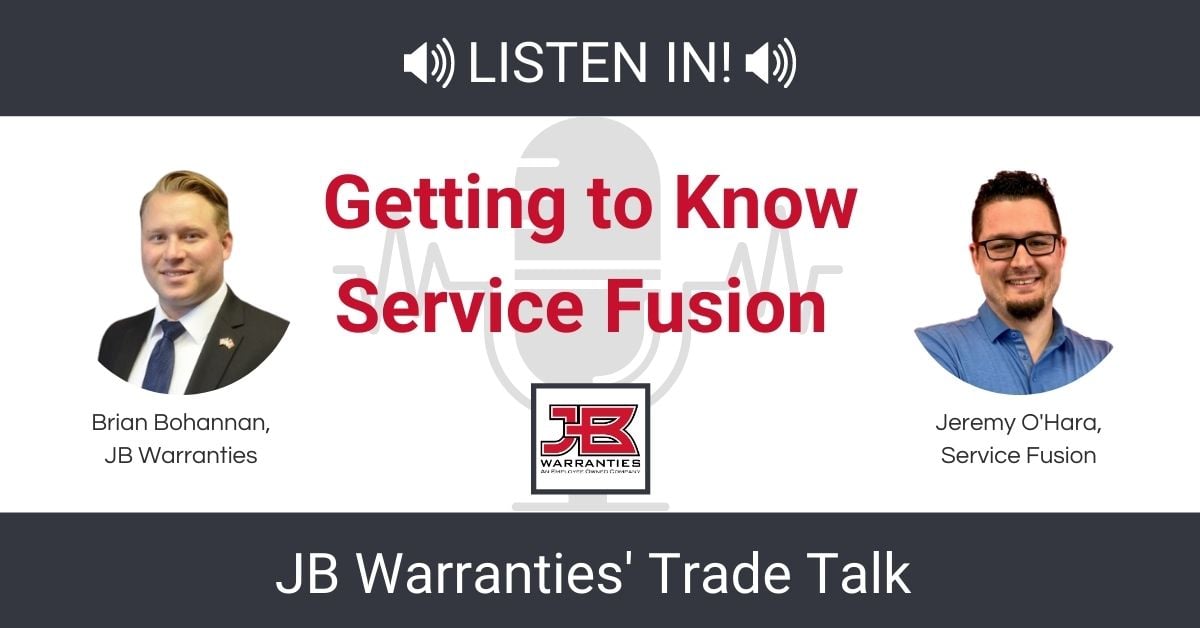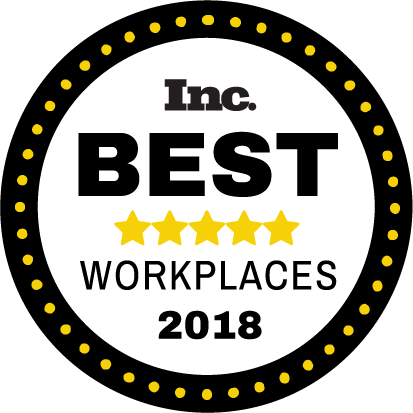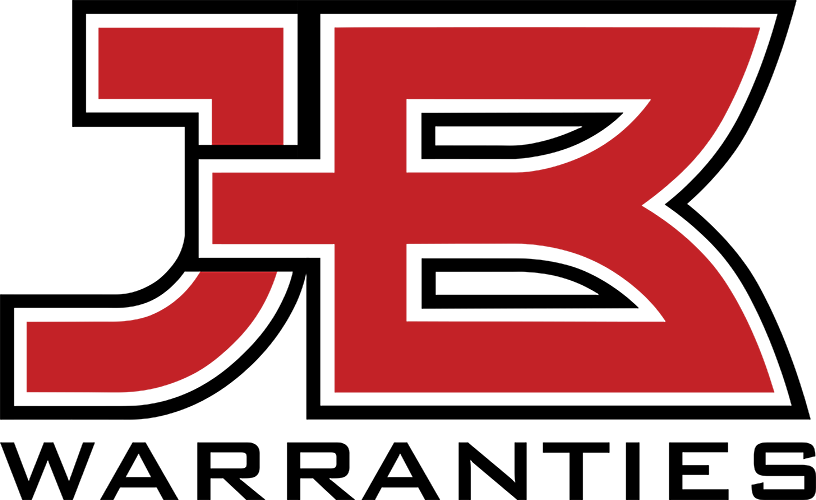
In this episode of Trade Talk, Brian Bohannan talks with Jeremy O'Hara from Service Fusion. They spend time digging into the their product and how their product can improve your field service business.
Host: Brian Bohannan, JB Warranties
Guest: Jeremy O'Hara, Service Fusion
Contact Jeremy
Phone:(866) 206-4828
Email: support@servicefusion.com
Brian Bohannan: On today's episode, we've got Jeremy O'Hara from Service Fusion, director of partnerships. Jeremy, welcome to the podcast.
Jeremy O'Hara: Thank you for having me, Brian.
Brian Bohannan: Today, we want to talk a little bit about a great resource we've found out there called Service Fusion. It's a field service platform that allows you to manage your business, connect your office to the field staff. Jeremy, tell us a little bit about what you do and where you work.
Jeremy O'Hara: Yeah, so I'm the director of partnerships, I guess, is my official title. So I work with companies like yourself, manufacturers and distributors to see if we can't better the offering of our product, for our customers. So, Service Fusion, it's a field service management tool as marketers would call, I guess. I think a more simple term is business management, so scheduling, dispatching, if you're a company and you've got trucks on the ground, you've got technicians out in the field, we're worth the conversation.
Jeremy O'Hara: So, we can handle all the day-to-day tasks, sync with QuickBooks and just make the life of a contractor easy. So in maybe traditional workflows, you might have a contractor that's using a whiteboard to do their scheduling, paper invoices that they're getting to customers or homeowners for them to pay invoices, hopefully. Not really good ways of following up. We replace all that with a digital solution where you can log in, you've got access to your schedule, that everybody has access to. Easy, simple way to follow up with customers and really complete the job from all the way to proposal to invoicing.
Brian Bohannan: So it puts everybody in your company on the same page, from the dispatcher to the in the field tech, to the accounting arm of your business. Now, before we jump into what it costs or anything like that, I just want to say, we've partnered with this company for about two years now. We've had a pretty successful partnership. A lot of JB Warranties contractors are on the platform and have had success with it. Tell me a little bit about what you guys are working on. There's a couple of things we'll get to, but what's new?
Jeremy O'Hara: So, quite a bit, man, this late spring summer has been a busy time for us, from a production standpoint. We launched a lot of upgrades or updates to our software, rather, that our customers have been asking for. And I think to really introduce it properly, one of the first things that we did late spring, was introduced what we call a customer idea portal. So, our customers can now log into Service Fusion. They can access a, almost like a forum where they can go and submit feature requests or share with us ideas on how to improve the software. It's been huge. And it's not just a way for them to say, "Hey, we think you should do this", but each user that has access to this idea portal, they have a certain number of votes, so they can go and see other users requests. They can see other users ideas and upvote them. And that's really where our development team spends a lot of their time getting the ideas for what we'll do, and what we'll add to our product roadmap.
Brian Bohannan: So anybody can submit this feedback, whether it's the office person or the plumber technician, you're getting feedback from everybody?
Jeremy O'Hara: Yep. Yeah. Yeah. As long as they're a customer. They just need to go on through Service Fusion and register for it. And then they've got a certain number of votes and in a certain number of idea submissions, they can send our way.
Brian Bohannan: Very cool. That's a pretty cool way to get feedback from your customer base and figure out kind of how to manage your time on what you're working on, what are the new updates, where do you start? One of the updates we talked about before we started today was the estimate templates and how it's an update for the field, probably. When you're building a quote in the field, instead of taking the information after you've done that heat load calculation, or taking your measurements, going back to the office, getting the pricing down, emailing it to the customer. Maybe a few days you hear back from them. A couple of things you guys have been working on is streamlining that process. Being able to in the field, pull that quote together, using a template. So if you've done it once you can do it easily the second time. Set it up once now, every time you're going out there and quoting a residential change out, you've got template there. You've connected it with the ability to text that invoice to customers, tell me a little bit about the text proposals and how you've kind of integrated with them.
Jeremy O'Hara: Yeah. So, you're touching on a couple things we've done there. So estimate templates we've had a lot of customers tell us that, "Hey we love being able to send proposals to customers, and traditionally you've been able to do that via email, but hey, how can we simplify that process?" So let's take an HVAC company that's going to do a residential change out. They go, they do their measurements and determined that, hey, this customer needs a two and a half ton gas system. Right? So, instead of going in and talking to that customer about how important efficiencies are and things of that nature, you can go and select two and a half ton gas system, and you can have up to five different pricing options already built out. So now you can present your 16 sear, your 18 sear, your 20 sear option all they're on the same estimate, really just by clicking a button because you've already set that up.
Jeremy O'Hara: Yeah. So it's been pretty powerful. Now presenting that to a customer. Traditionally, you've had a couple options. You could print it up or pull it up on your phone, share it with the customer. You could send an email and hopefully hear back from the customer. But what we've done, especially, since the start of COVID and how that's changed the interaction with homeowners you want to move more towards contactless, but also ways to more effectively communicate. A lot of research has been done on this, but for the first time ever, from what I understand, there's been some research that indicates that every age demographic now prefers SMS, or text messaging as their primary communication. So, what we've done, and again, something from the idea portal, something that kind of popped up because of COVID is we've added the ability to easily text proposals or estimates, and also invoices that are formatted for mobile.
Jeremy O'Hara: Yeah. So, now you're out there, you've got a homeowner that needs a change out, or maybe it's just a repair you need to give them a quote on, right? You've got the ability to build that proposal. And with the push of a button, you've already got the homeowner's contact information in there. You can send that over to the homeowner via text message. They click on it. Now they're looking at it on their phone. They're not having to touch your phone. You're not having to get in their face and hand them their phone. It's really seamless. It gives them the ability to accept and sign right from their phone, if they want to do it.
Jeremy O'Hara: Yeah. And then you can do the same thing with invoices. For me, I recently had a landscaper come out and do some work and they were in a pretty similar system. It was, "Hey, I'm going to text you when I get there, we're going to get it knocked out. Once we're done, I'm going to text you and let you know when we're done, and you can pay me this way." Right? And so it was nice because didn't have to go outside and talk to them and potentially expose your family to it, or potentially expose the worker to anything that everybody's really just uncomfortable with getting close right now. And it makes sense. They should be, right?
Brian Bohannan: Kind of uncertain times. So basically it's just made it touchless?
Jeremy O'Hara: Yeah.
Brian Bohannan: Now, as far as managing your customers, another update, I do operations here at JB warranties. Being able to communicate with all of your customers at once. Another update I thought was pretty refreshing, was that you're allowing people to consolidate in the form of mass email. So if we want to actually send an email to the all of the JB Warranties customers we have to pay for a program to do that. You got HubSpot on the high end. There's MailChimp other options out there, but you'd have to... Your email won't just let you send 15,000 emails at once. You guys have brought that in-house now, so that if I may Service Fusion customer or a contractor, and I've got 2000 customers out there, I can send an email or a promo to everyone at once. I can probably follow up with everybody I've quoted in the last three months, a reminder, all of this with the push of a button, instead of making all those phone calls, you've consolidated that service into the platform. Tell us a little bit about, was that one of your customer feedback features or?
Jeremy O'Hara: Yeah. So, that came, and I don't know the exact origin of it, I suppose. I don't know if a customer requested it, but that came pretty quickly in response to a lot of the COVID shutdowns nationwide. Right. So what we saw was contractors, and if you're listening to this, are you guys know technicians, tradesmen, tradeswomen, right? They're essential. They never stopped working. I mean, you've got guys out here welding on your new world headquarters, as we speak. Beautiful place, by the way, you'll have to do a tour for everybody, once you get it set up.
Brian Bohannan: Once we get it set up, yeah. We'll try it.
Jeremy O'Hara: But essentially what you're looking at is they never slowed down. But the assumption was, was that everything was closed. And so we wanted to give our customers a way to communicate to all of their customers, all the homeowners or businesses out there that, hey, we're either still in business. Maybe here's a promotion. Maybe we're going to shut down for a couple of weeks, but we'll be back. We wanted a way for them to be able to communicate effectively with their customers. And we thought the easiest way to do that would be inside of our system. So, we had that out, I think, within two weeks of the first shutdowns of the coronavirus COVID-19 in the United States. So we saw that as pretty important, and I'm sure some customers have requested it over the years, but we saw that as something that we had to do given the circumstances.
Brian Bohannan: Well, it's something maybe you just overlooked, but the ability to, and one time, one fell swoop alert, all your customers do something is very useful. It's valuable. Now, in that same vein, tell us a little bit about service chat.ai, the big update that came out in, was it April, you said?
Jeremy O'Hara: Yeah. So service check came out, I think about three weeks ago, actually. So [crosstalk] looking at this, it was a July release, right? Don't know when we'll get this live. So, yeah, so sometime in July. So what service chat is, is it's an additional feature on what we call ServiceCall.AI. So if I take a step back and explain that ServiceCall.AI basically an integrated phone system inside of Service Fusion, which we've seen an increase in utilization here because essentially what you're looking at is the ability to make phone calls, receive phone calls, record phone calls all from within our platform. So, a couple things to talk on here, you've got a cloud based system, so you can access it from anywhere. If you have a situation where the office is closed for a couple of days or a couple of minutes, somebody starts to feel bad.
Jeremy O'Hara: Maybe you want to play it safe in the office. You send an employee home. Well, they can now instead having to take time off, they can just log into Service Fusion, and obviously access to scheduling and dispatching, well will ServiceCall.AI they're taking their phone with them. So as soon as they log into Service Fusion, they can receive phone calls. They can make phone calls, it's all tracked through the system. And so what we've done on top of that, and going back to the text messaging conversation, we added service chat. So, service chat, essentially, it's a web tool. You're an HVAC contractor, you're a plumber. You can add a quick widget, just copy a line of code and paste it in there. And it's basically a chat tool that would pop up that would allow customers to start a conversation via text message.
Jeremy O'Hara: So they plug in their phone number, they plug in their question, they can chat with you right there. Or when you get it on your Service Fusion side, it's going to come as a text message, you respond from your computer, and you're texting that homeowner right on their phone. So it's, one, it's a way to effectively communicate with your customers. Also a great way to capture leads because that's the kind of person that maybe they have a high level question that you wouldn't have even spoke to before, because they didn't want to give you a phone call. They didn't want to give you their name, their phone number, all that. So it's a lead capture, but also a conversation tool.
Brian Bohannan: I spent a lot of time on air conditioning, contractors and plumbers websites, and more and more, you're seeing it as soon as you spend two seconds on that site, a little box pops up and it's, "What can we help you with?" It's a chat. You're now giving every Service Fusion contractor, the ability to do that to their website, plug and play, let us know what you want to talk about. You don't have to call us. Some people say less personal, maybe it's more personal actually, because they'll actually ask you, there's no beating around the bush. It's when is your next available appointment? So, yes, lead generation that way, but also just really streamlining communication with your customers and potential customers. I think that's a great tool, so.
Jeremy O'Hara: Yeah. And no technical knowledge required, right? So we've got a support team that's going to help them out, but essentially it's "Hey, copy this, put it in this section on your website. You're ready to go." So it's not a big implementation. It's not a big project.
Brian Bohannan: Now a little bit more. Tell us a little bit more on Servicecall.AI. Basically, it's another consolidation where you used to have to pay for a phone service, if you wanted importing. Because I'll put my operations hat on. I'd like to know how many phone calls are going out. How many are coming in? Who's making this amount of phone calls, who's doing that. This gives you all the data and it comes with the package and it's [crosstalk 00:12:55].
Jeremy O'Hara: ...it gives you all that information. Right? But on top of that, you can even attach specific marketing sources to specific phone numbers. So, not only that, if you've got there are people listening to this right now and you guys do marketing, we do marketing. If you don't track your marketing, you don't know if you should continue to spend on it, right? And so if you've got a Google ad words campaign, if you've got a mailer that you're sending out to homeowners or to customers, right, the only way to really track the effectiveness is to see, "Hey, did this get you the business?"
Jeremy O'Hara: So, what a lot of our contractors [inaudible] you can easily go in there. You can create a new phone number and assign that number to a specific lead source or marketing campaign. So if you're going to do some new Facebook ads, you go create a new phone number before you do it. The only place this phone number appears is on your Facebook ads. Anytime anybody calls that phone number, you immediately know the return on the investment for that marketing campaign.
Brian Bohannan: Return on investment, you have to know when it returns to you. [crosstalk] So this gives you the you know for sure if your marketing efforts were successful.
Jeremy O'Hara: Yeah. Hey, is it busy because it's the summer or is it busy because of the Facebook campaign that you did? So this gives you the ability to track that.
Brian Bohannan: Well, you mentioned in contractors kind of transitioning this summer faster than others. Some are still holding fast with the whiteboard. This lets you come into the future. This does everything for you with all the best reporting. Talk to me a little bit about what it costs and what kind of results do you see when somebody plugs their business into Service Fusion puts it in your hands.
Jeremy O'Hara: Yeah, I think there, when it comes to costs, we do things probably a lot differently than most of the markets. So, we really just want to simplify that process. You can spend as much money as you want on field service management software. You can go and custom build your own, right? So, hey, open checkbook, go hire somebody to build it. There are options similar to ours that can cost $50,000 a year for a company that's 10 or 11 technicians. With us, we really believe in simplicity. So when you look at it, it's on average I'll talk generally, we've got three rate plans on the high end, it's $350 a month, and that's for an entire company. But most of our customers, most of our contractors are spending somewhere around $200 a month.
Jeremy O'Hara: That's for their entire company. That's with no setup fees, it's with no contracts. So, really what the process looks like a lot of times is if somebody will reach out to us and request a demo, we'll show them the software. If they like it, they pay for their first month. They get started with onboarding, that's included at no additional cost as well. So you're not paying several hundred dollars or several thousand dollars for support. It's all included in that flat rate price.
Jeremy O'Hara: We used to be right across the street from you guys before you guys got out here, but were based in Irving, Texas right outside of Dallas on the North side of the airport, our sales and support teams, our leadership teams are all based right there in the office. Right now we're all working from home. One of the benefits of a cloud-based solution is that's all we rely on as well. And so, literally, just one decision, one day we made the decision that you have no more office we're going to work from home until we feel like it's safer to do that. And we were able to do that, and our business didn't slow down at all.
Brian Bohannan: It probably helped you come up with some of these ideas to help these contractors because what we're all facing [crosstalk 00:00:16:01].
Jeremy O'Hara: ...yeah we're going through all the same stuff [crosstalk]
Brian Bohannan: ...to get the house. So, now you can text proposals. Now they're chatting with you on the website. It's just... Now I wanted to say one thing about the kind of the customer base at JB warranties. We've got everybody from 500 trucks out there in the streets covering multiple states, regional type companies down to the guy who just started, he's got one truck and he's trying to get it done. The majority of our customers are somewhere between 10 and 50 trucks, probably. You said it's $200 a month for your company. What's the cost to the two truck guy. And what does it cost for the 50 truck guy or the 20 truck guy?
Jeremy O'Hara: So it's the same price. So whether it's Chuck in a truck, right? So, it's a guy that left another company, he's on his own and he's rolling his own jobs. And just want something to have a digital solution to schedule invoice and dispatch out in the field. He can do that from his phone. If it's a 50 technician company, again, it's the same price. Most of our customers are somewhere between five and 15 technicians, but to your point, that's just the majority of companies that are out there. There's only a handful of companies that have 50, 60 technicians. I would say the one caveat, hey, where we might not be a great fit is if you're a contractor and you cover multiple states and you've got five or six different offices that have different reporting trees and sync with different QuickBooks systems, we didn't really design our software for that.
Jeremy O'Hara: So there's probably a better tool out there for you if that's your case, but if you're a single location, it doesn't matter how many users, and it's all reporting under the same roof, then, hey, we're worth conversation, whether you're using one of our competitors or another field service management company, and you think there's an opportunity from hearing this to save money reach out to us. We'd love to talk to you. If it's not a good fit for one reason or the other, we'll let you know. No harm, no foul. If you're a smaller company and you've talked to some of the other companies out there and thought, hey, $1,500 a month, 2000, 3000, sometimes dollars a month. Just isn't something that you want to afford. Hey, we're a great solution that offers the same features just for a much higher value.
Brian Bohannan: So no per user fee, if you want to plug this into your business, you know the fixed cost basically?
Jeremy O'Hara: Correct.
Brian Bohannan: Are you guys the only people out there not doing per user?
Jeremy O'Hara: So some companies started doing some things like ours, but they shifted a lot of them shifted even towards tiered pricing where instead of doing it per user, technically what they're doing is like, "Hey, it's this price up to X amount of users." And then here's a price, like some premium price for unlimited users. So we're not necessarily the only ones that do unlimited user flat rate pricing. But our difference is in pricing, the difference in our packages is based on features and utilization rather than the size of your company. Our goal is to help contractors grow. I was talking to a contractor, he's a customer of yours. Actually the other day, that's based here in DFW, he's been using us for a year. And he said revenues up about 35% for him over the year, so he's had to hire additional guys.
Jeremy O'Hara: Well, we don't want to penalize you for doing what we all set out to do. Right? We don't want to charge you any more if you were successful in utilizing our software and growing. Now that being said, hey, just for full disclosure, we talked about a couple of things like ServiceCall.AI, that being a phone system there are some options where you'd have to decide who's going to use that. And there are some small per user costs, but nothing that's going to get you out of like the price range that we talked.
Brian Bohannan: Is there any hardware costs with Service Call or is it just something an app on your phone?
Jeremy O'Hara: Yeah. So, it actually just works from your desktop computer. So, primarily the way we targeted ServiceCall.AI, that's going to be for your CSRs, your office managers. So, it's going to be for the people in the office. So, hey, plug in a headset to your computer and you're ready to go.
Brian Bohannan: Now all great updates. I just wanted to ask you as far as if you're a JB warranties customer, and you're seeing this for the first time or learning about Service Fusion for the first time, what do you do? Demos, Zoom meetings, it's hard to get into people's offices right now, or you're not going in person, are you?
Jeremy O'Hara: Yeah, no. So we don't do in person demos or in person events, especially not now. It just would make sense to do a lot of that. So best way to get in touch with us, go to if you're listening to this podcast, especially if you're a JB warranties dealer, or if you're not right, you just go to www.servicefusion.com/JB warranties. It's got a quick demo video that you can watch. You can request a demo from there. If you request a demo, you'll be sent to one of two or three guys that works on our partner team, maybe myself, we're going to give you a call. We're going to schedule the time and we're going to run you through the software and show it to you. If you like it, you pay for your first month and get started. We help you onboarding. Mention the podcast and we'll even give you 20% off. So, yeah. We want to get something to your podcast [crosstalk] listeners, your customers. So, yeah, [crosstalk] we'll hook you up. Yeah, surprise. Yeah.
Brian Bohannan: Well, I appreciate that. So take a look at Service Fusion if you've been looking into field service management, we've heard nothing but positive reviews. If you get in there, and you find out they don't have something that you're looking for. It looks like you can go to the customer idea portal and [crosstalk] ...build it out for them.
Jeremy O'Hara: Yeah. Well, we'll consider it right?
Brian Bohannan: Yeah. I guess it has to get voted on, so [crosstalk 00:21:19].
Jeremy O'Hara: Exactly, so-
Brian Bohannan: Good ideas are good [crosstalk 00:21:21].
Jeremy O'Hara: ...that's what drives our decisions though. Yeah. Needless to say.
Brian Bohannan: I appreciate you coming out today, man. First podcast we've done from the new office.
Jeremy O'Hara: It's wonderful.
Brian Bohannan: I promise these are not actors. These are real guys, tradesman. We've got plumbers, welders. We're finishing up our new office. We will do the tour. It's a great idea, but we appreciate your time today and thank you very much.
Jeremy O'Hara: No problem. Come check us out.
Brian Bohannan: Okay.
Jeremy O'Hara: Thanks.
Brian Bohannan: Thank you.
Brian Bohannan
Vice President of Sales at JB Warranties






